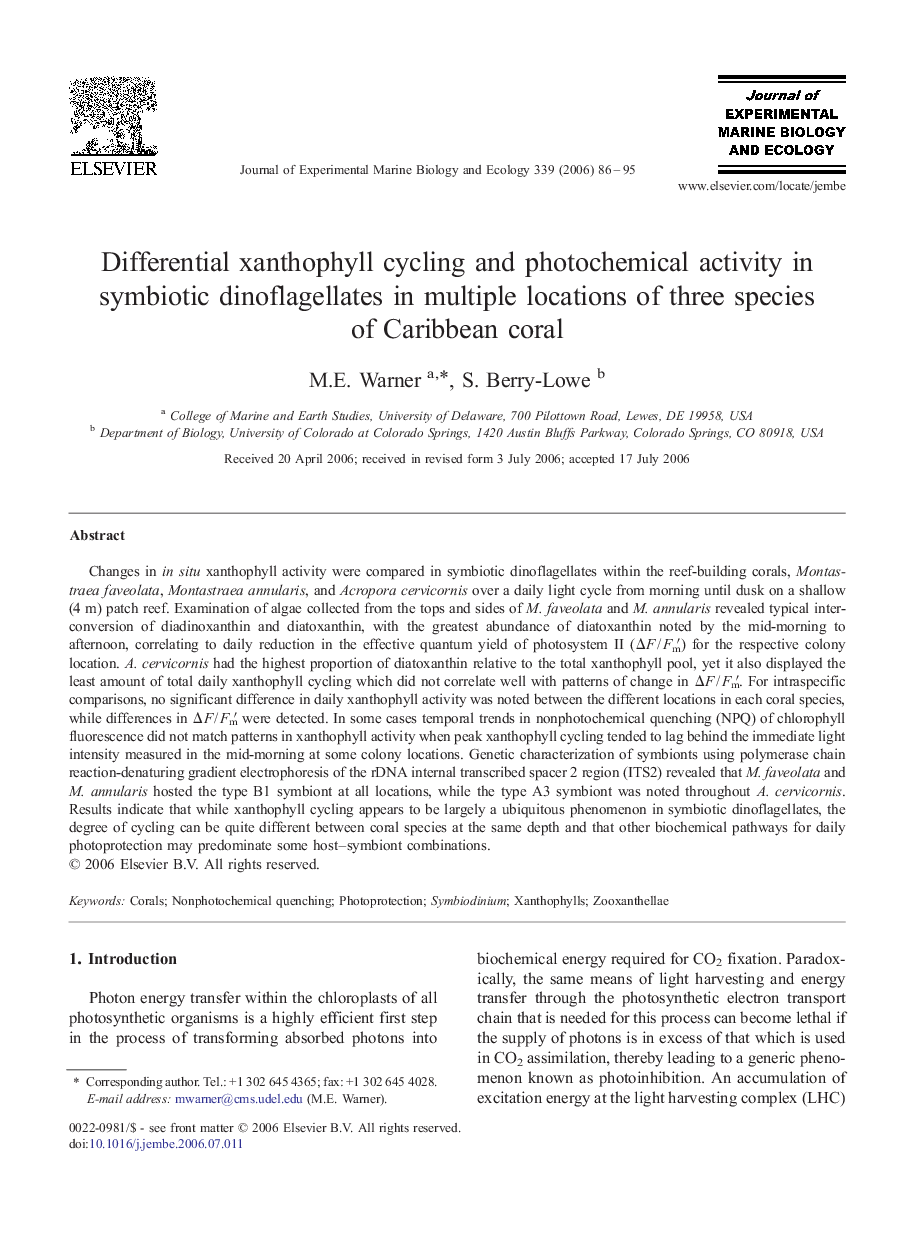| کد مقاله | کد نشریه | سال انتشار | مقاله انگلیسی | نسخه تمام متن |
|---|---|---|---|---|
| 4397910 | 1305913 | 2006 | 10 صفحه PDF | دانلود رایگان |

Changes in in situ xanthophyll activity were compared in symbiotic dinoflagellates within the reef-building corals, Montastraea faveolata, Montastraea annularis, and Acropora cervicornis over a daily light cycle from morning until dusk on a shallow (4 m) patch reef. Examination of algae collected from the tops and sides of M. faveolata and M. annularis revealed typical inter-conversion of diadinoxanthin and diatoxanthin, with the greatest abundance of diatoxanthin noted by the mid-morning to afternoon, correlating to daily reduction in the effective quantum yield of photosystem II (ΔF / Fm′) for the respective colony location. A. cervicornis had the highest proportion of diatoxanthin relative to the total xanthophyll pool, yet it also displayed the least amount of total daily xanthophyll cycling which did not correlate well with patterns of change in ΔF / Fm′. For intraspecific comparisons, no significant difference in daily xanthophyll activity was noted between the different locations in each coral species, while differences in ΔF / Fm′ were detected. In some cases temporal trends in nonphotochemical quenching (NPQ) of chlorophyll fluorescence did not match patterns in xanthophyll activity when peak xanthophyll cycling tended to lag behind the immediate light intensity measured in the mid-morning at some colony locations. Genetic characterization of symbionts using polymerase chain reaction-denaturing gradient electrophoresis of the rDNA internal transcribed spacer 2 region (ITS2) revealed that M. faveolata and M. annularis hosted the type B1 symbiont at all locations, while the type A3 symbiont was noted throughout A. cervicornis. Results indicate that while xanthophyll cycling appears to be largely a ubiquitous phenomenon in symbiotic dinoflagellates, the degree of cycling can be quite different between coral species at the same depth and that other biochemical pathways for daily photoprotection may predominate some host–symbiont combinations.
Journal: Journal of Experimental Marine Biology and Ecology - Volume 339, Issue 1, 28 November 2006, Pages 86–95